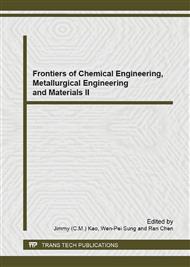p.404
p.409
p.413
p.419
p.423
p.430
p.434
p.438
p.442
Automatically Adjusting the Transmission Power of ZigBee End-Devices Based on RSSI
Abstract:
This paper proposes a method that automatically adjusts the transmission power of ZigBee end-devices based on received signal strength indication (RSSI). Under normal communication condition, automatically adjusting the transmission power of ZigBee end-devices by constructing a negative feedback control system, and it uses the controller with relay characteristics, keep it in the smallest state of transmission power, which effectively reduces the energy consumption of the end-devices. Compared with the traditional methods of statically adjusting transmission power, experimental results show that the method proposed is more suitable for network with frequently status changes, making the stability and low-power performance of ZigBee network system significantly improved.
Info:
Periodical:
Pages:
423-429
Citation:
Online since:
September 2013
Authors:
Keywords:
Price:
Сopyright:
© 2013 Trans Tech Publications Ltd. All Rights Reserved
Share:
Citation:


